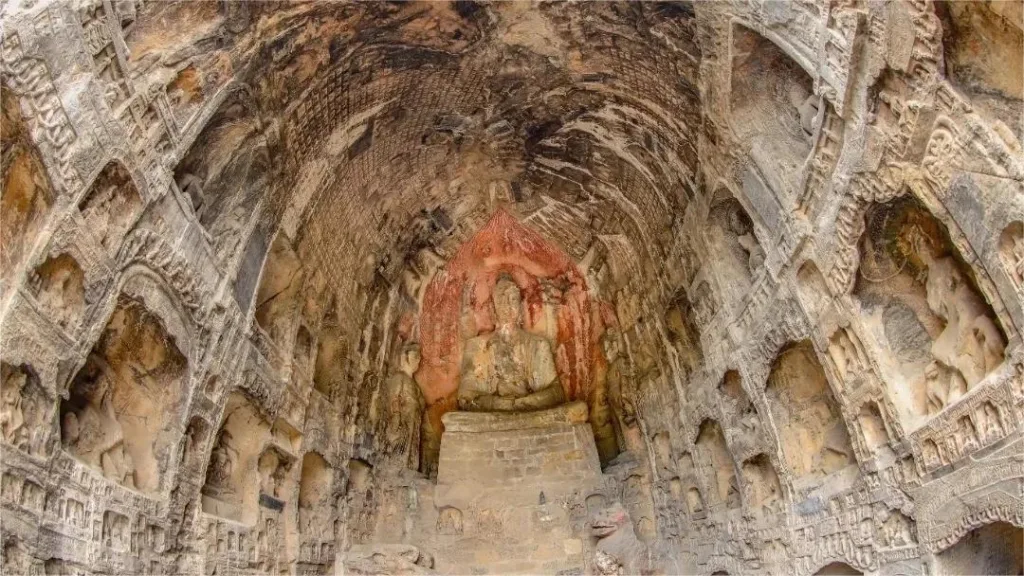Cueva de Guyang en las Grutas de Longmeng


Guyang Cave (古阳洞), constructed during the Northern Wei Dynasty by Emperor Xiaowen in honor of his grandmother Empress Dowager Feng, holds a significant historical and artistic importance within the Longmen Grottoes en Luoyang. With a history dating back 1500 years, it stands as one of the earliest caves in the Longmen Grottoes complex. Its numerous small grottoes, intricately adorned, serve as valuable artifacts for the study of Northern Wei cave art. The calligraphy inscriptions found within the cave exhibit a simple and ancient elegance, offering valuable insights for the study of calligraphy history.
During the late Qing Dynasty, when Empress Dowager Cixi fled westward to escape the invading Eight-Nation Alliance, she made a stop at Guyang Cave. Impressed by its significance, she ordered the renovation of one of the Buddha statues within the cave. Consequently, the main statue of Shakyamuni Buddha was transformed into an image of Laozi, and the cave was renamed “Laojun Cave.”
Guyang Cave features over 1000 niches carved into its walls and ceilings, housing a diverse array of Buddha statues. With more than 800 inscriptions, it holds the distinction of being one of the caves with the most preserved inscriptions in Chinese cave art history. The central wall of the cave displays three statues constructed by Emperor Xiaowen: a seated Shakyamuni Buddha flanked by two Bodhisattvas. The central Buddha statue, standing at 7.82 meters tall, features a tall ushnisha (cranial bump) and a serene expression, although the facial features are now destroyed. Clad in flowing robes, the Buddha is depicted in a gesture of meditation. The accompanying Bodhisattvas, adorned with crowns and elegant attire, exude grace and tranquility, serving as exemplary works of Northern Wei sculpture.
The sculptures within Guyang Cave reflect the prevailing artistic style of the later Northern Wei period, characterized by slender and graceful figures. The intricate carvings adorning the niches and the halo surrounding the Buddha statues demonstrate the exceptional skill and artistry of the sculptors and painters of that era. The inscriptions found throughout the cave, numbering nearly a thousand, are revered for their dignified and robust calligraphy, representing the pinnacle of Wei stone inscription art.
Otras atracciones en Grutas de Longmen

Templo de Xiangshan

Jardín Bai

Cueva del Templo de Jingshan

Grutas de Leigutai

Estatua de Buda Vairocana

Villa de Jiang y Song

Templo Kanjing

Templo Fengxian

Cueva del Loto

Cuevas de Binyang

Cueva de los Diez Mil Budas

Templo Qianxi

Cueva de recetas médicas
Lugares históricos de Henan, Atracciones de Luoyang